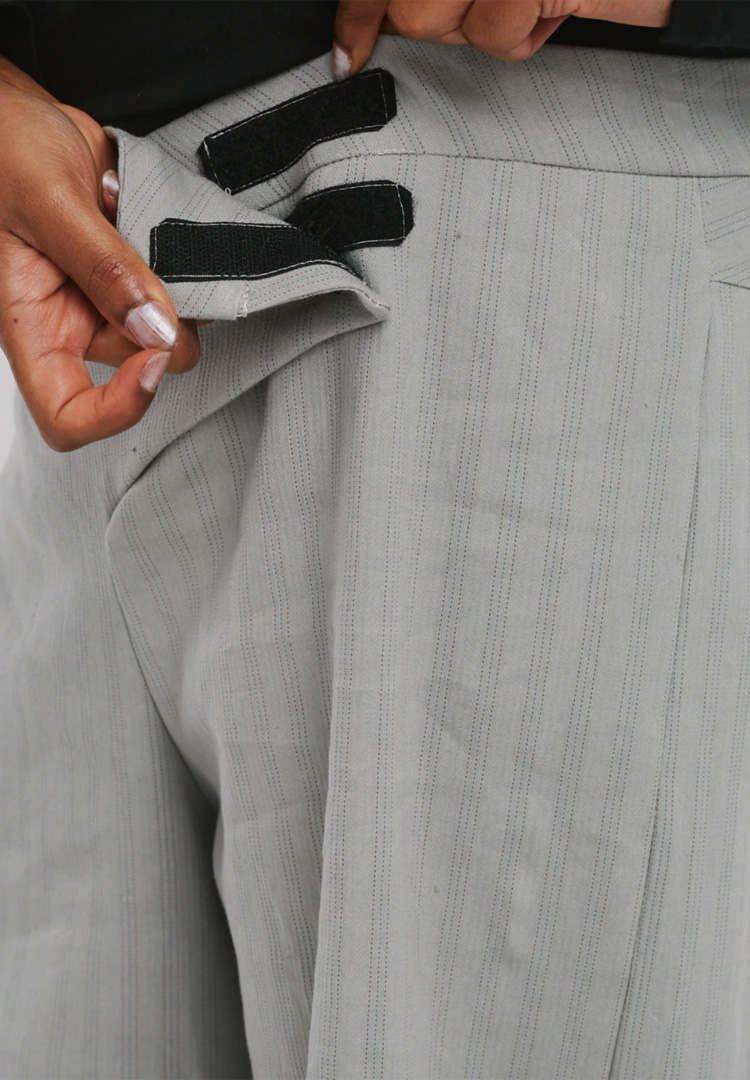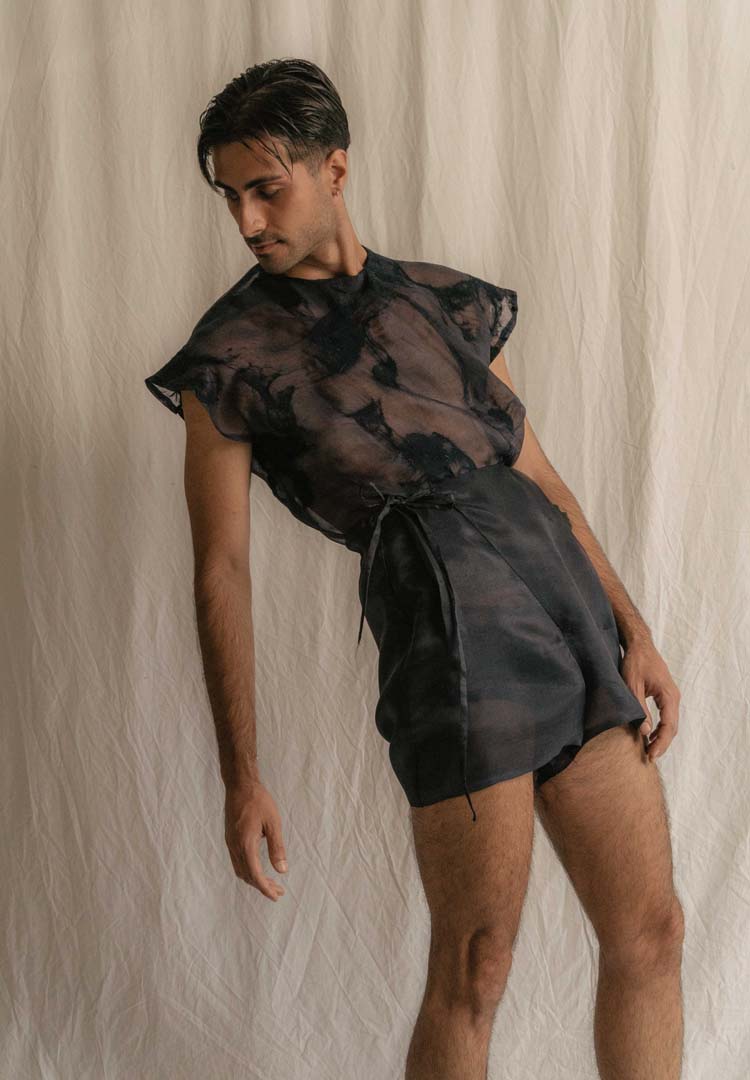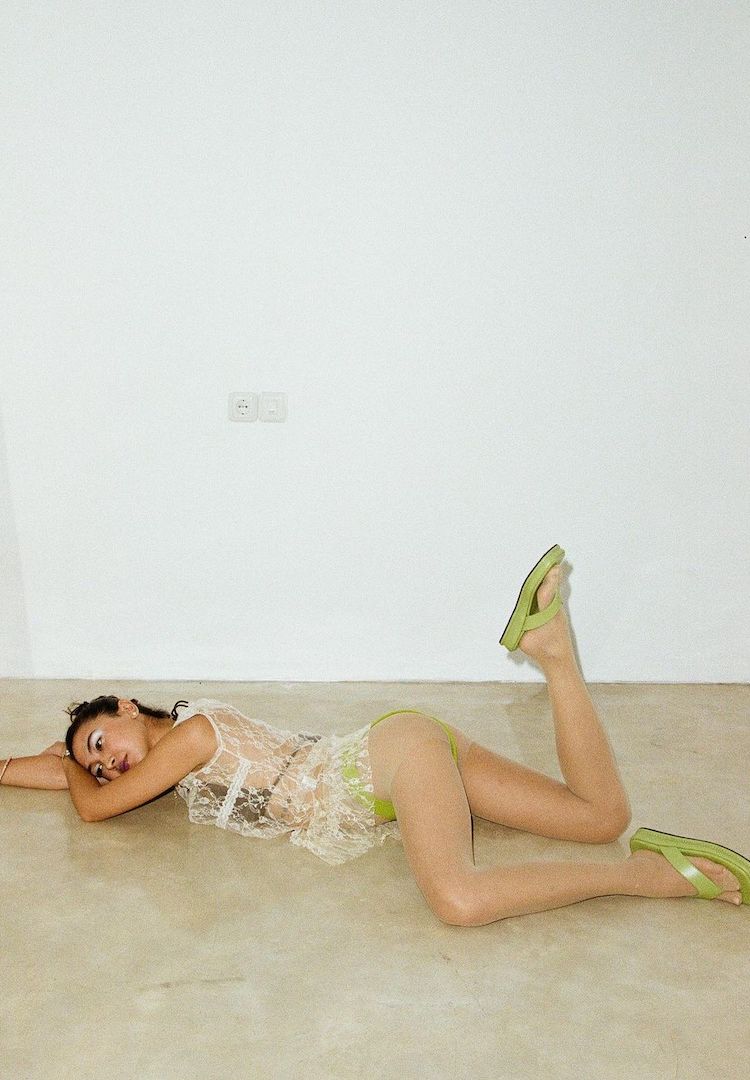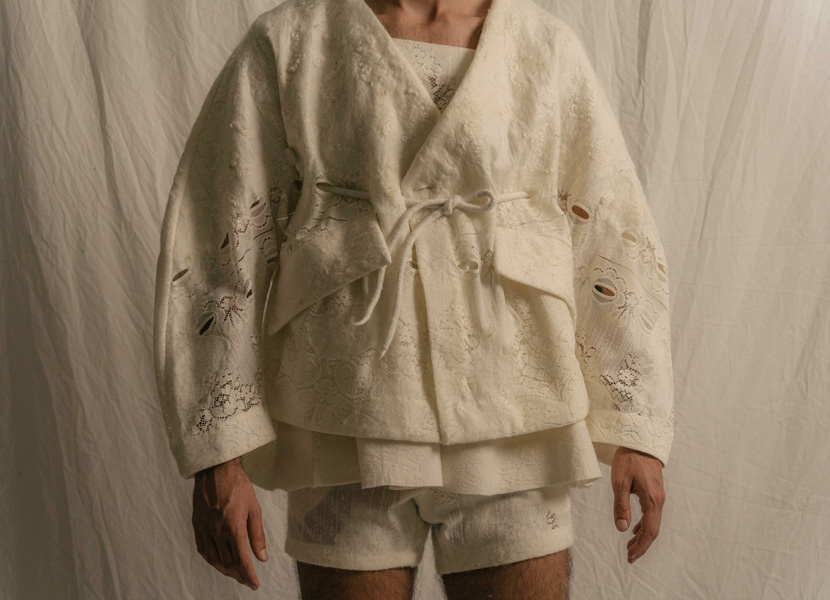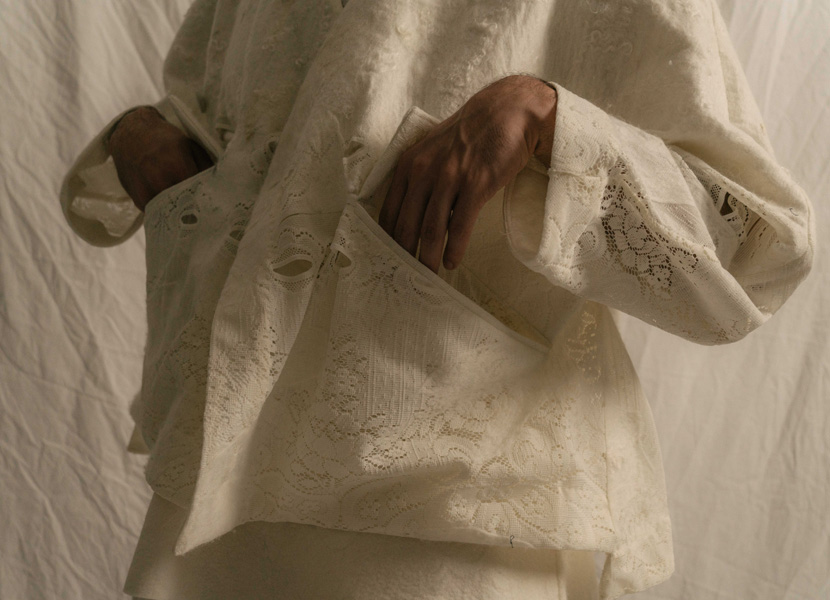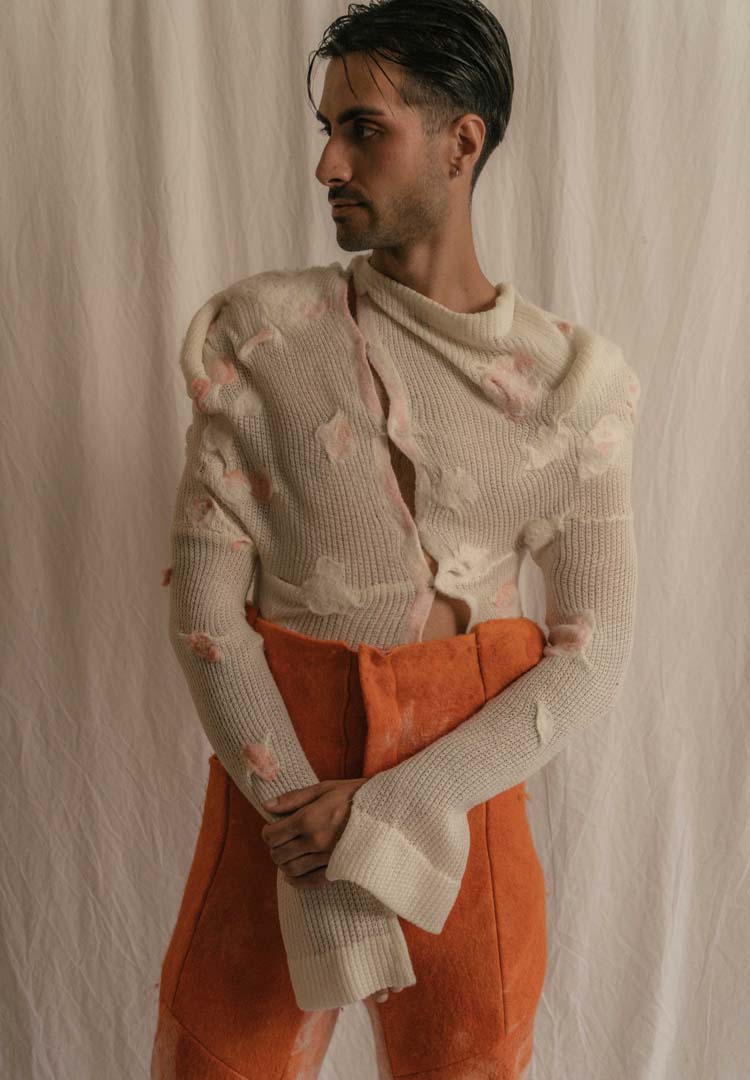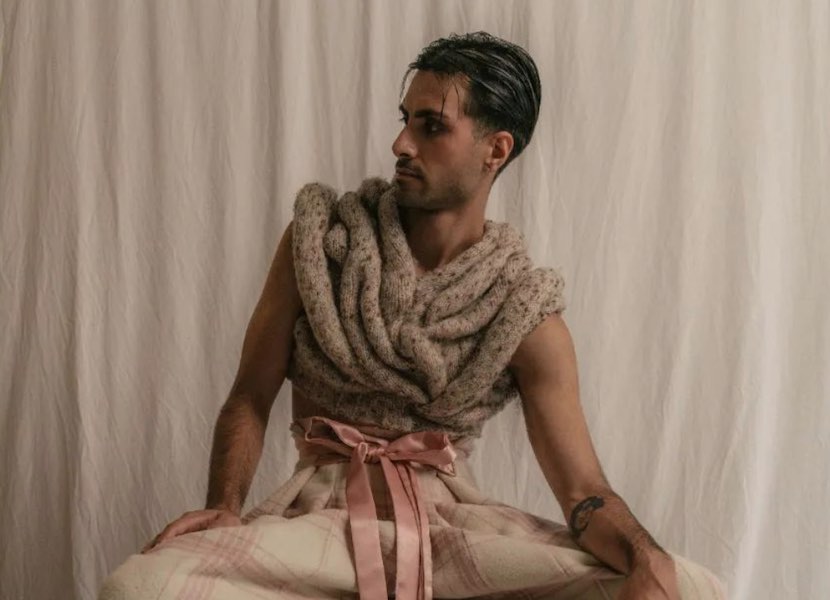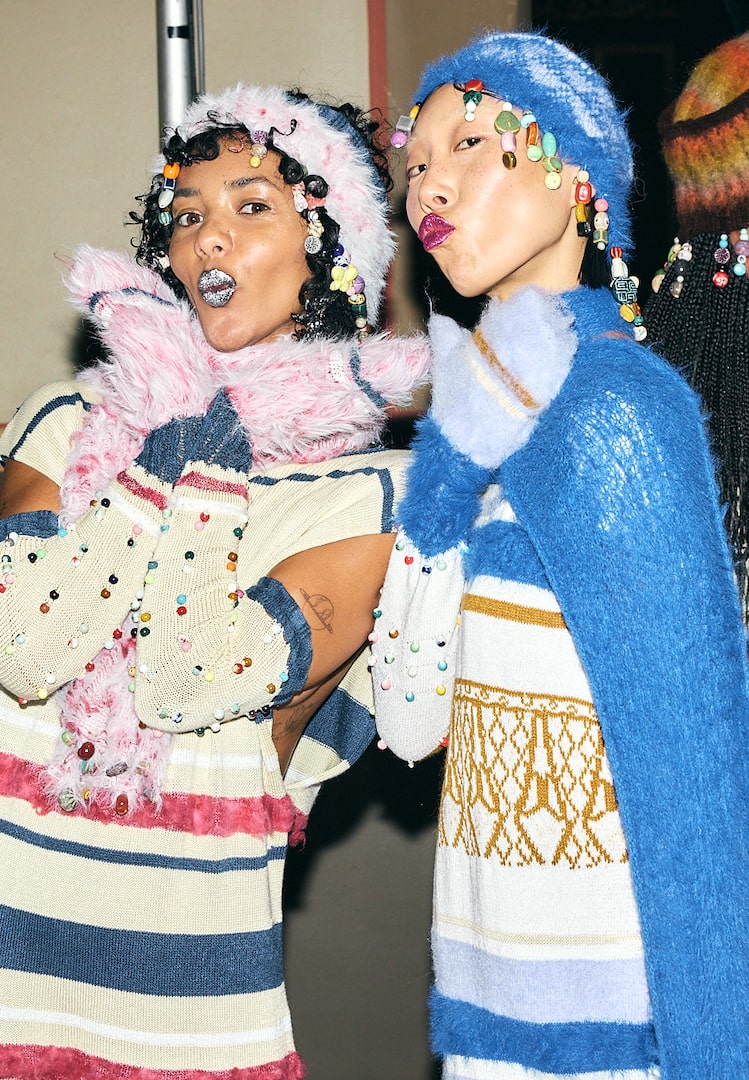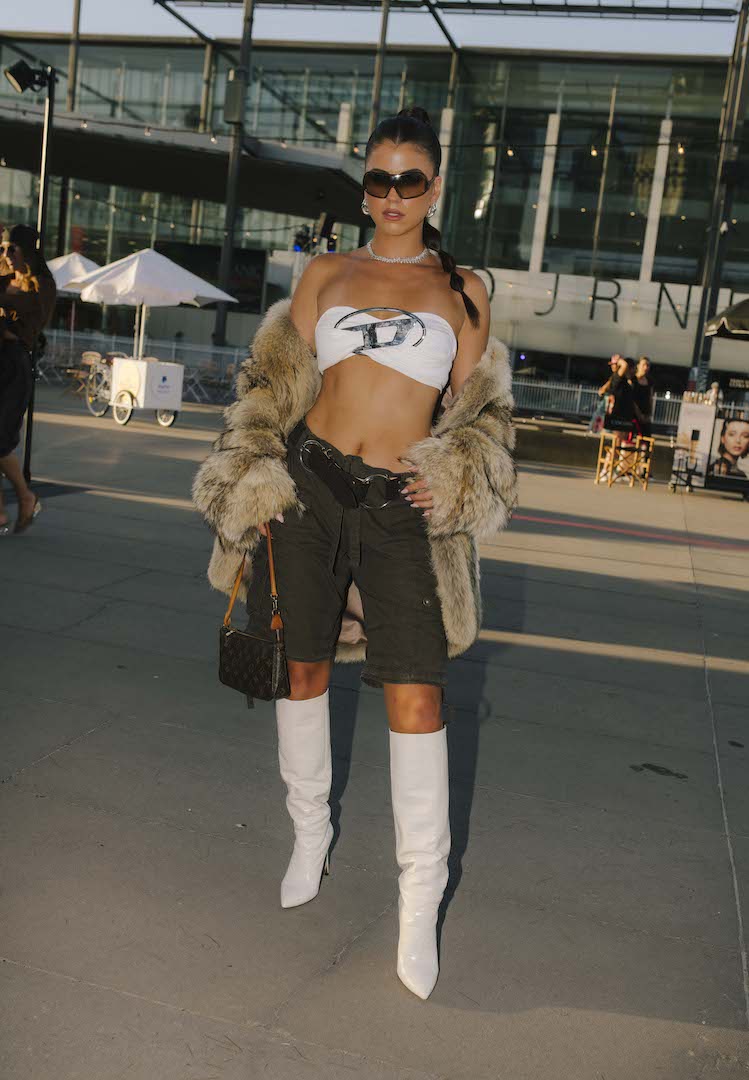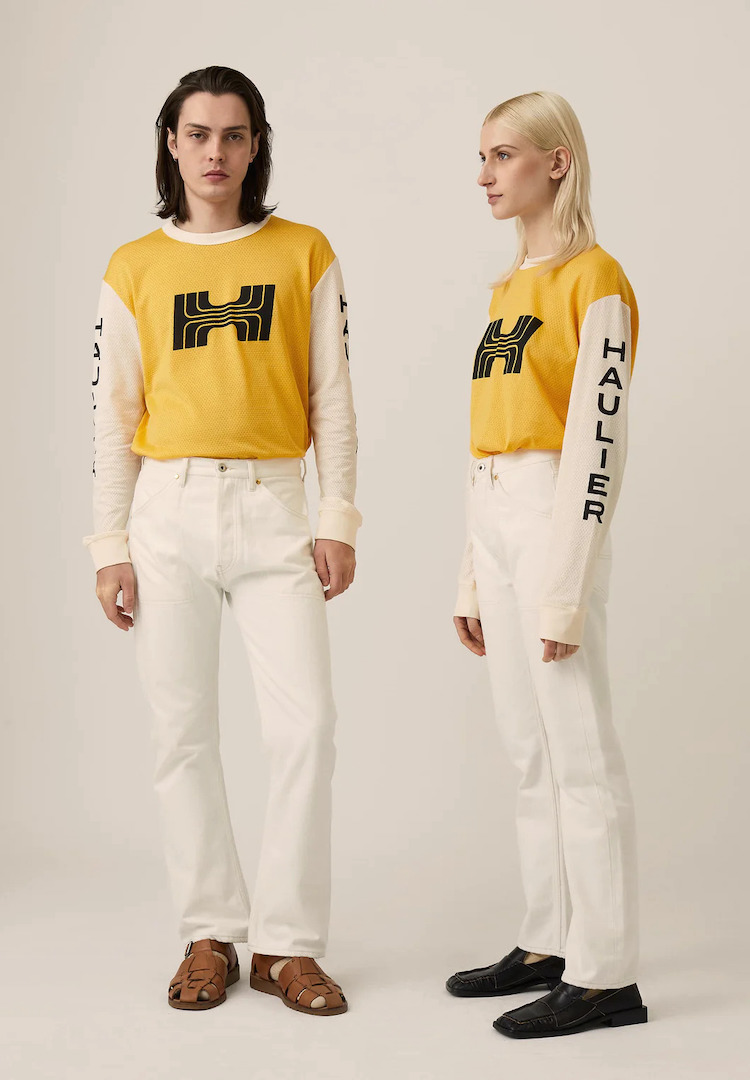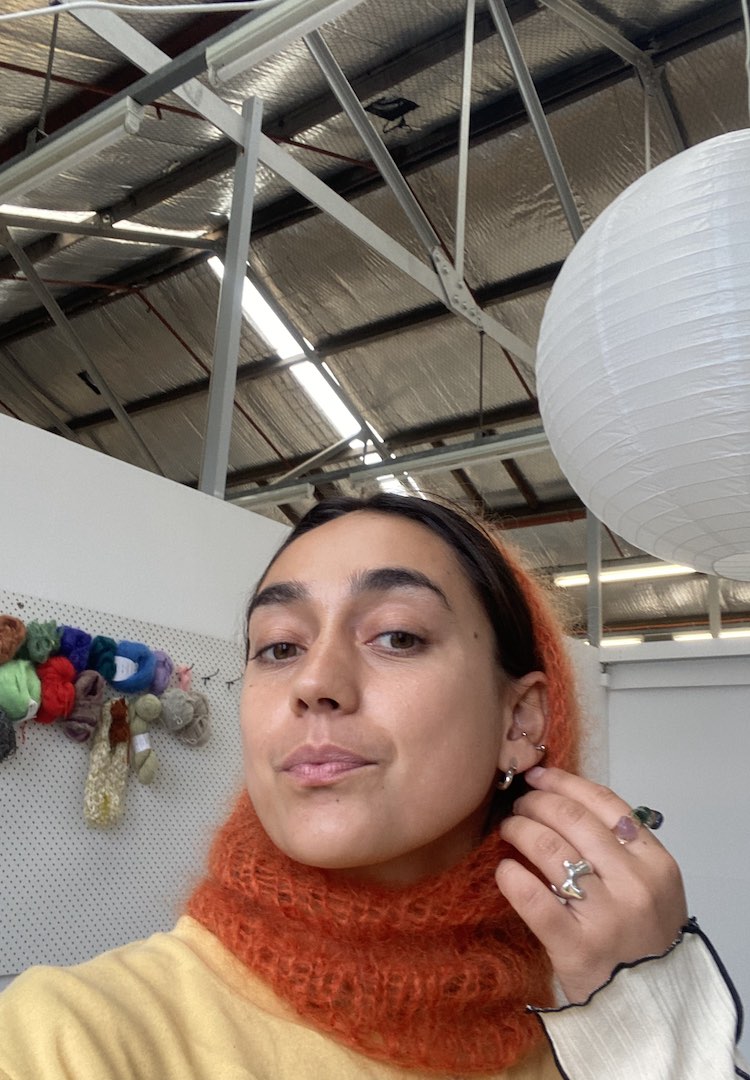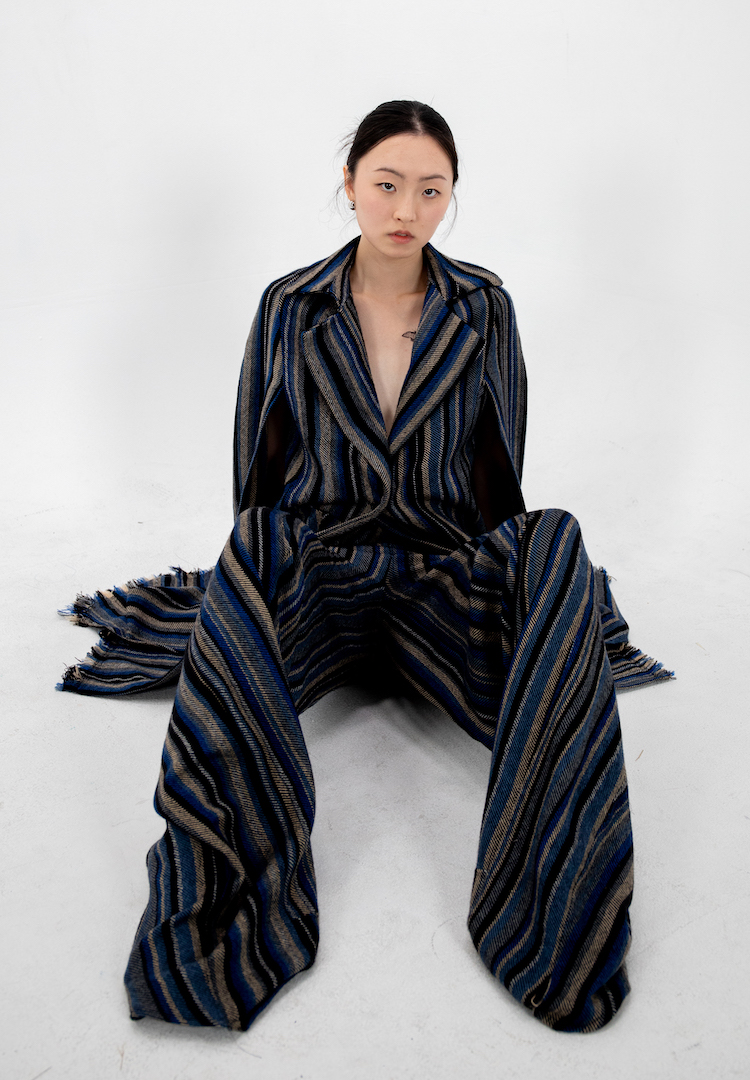Sydney graduate Maddison Robinson is creating fashion designed to live forever
WORDS BY SAMANTHA HOGAN
A collection for the ages.
If you’ve ever tried to solve the paradox of The Ship of Theseus – that is, the question of whether an object is still the same object if you replace all its parts – then Maddison Robinson’s graduate collection Heir may provide you with some food for thought.
In her collection, the Sydney-based designer celebrates the timelessness of inherited and upcycled garments. But rather than focusing on whether a piece is still the same after it’s been physically altered, Maddison celebrates the transformative value of an ever-changing garment.
Want to hear more about the latest in fashion? Subscribe here and we’ll send it straight to your inbox.
Some pieces have minimal seams and are completely new, awaiting a life of future wear and reconfigurations. Others are a combination of old and new, with textiles that have spanned across generations woven into their design, such as tea towels and vintage sweaters.
Heir is a collection that feels warmly familiar yet future-focused, so it comes as no surprise that Maddison has been ranked as one of the top ten finalists at this year’s National Graduate Showcase at PayPal Melbourne Fashion Festival.
Fashion Journal is excited to once again be a supporting partner of the showcase, this year presented by Samsung Galaxy, to celebrate Australia’s top-ranked emerging talent in fashion. The event will see a select number of leading fashion graduates from all over the country exhibit their visionary collections in a digital presentation, showcasing cutting-edge design and innovation.
Over the next few weeks, we’ll be profiling each designer through a series of interviews. Next up is Maddison.
Hi Maddison! Please introduce yourself to our readers.
My name is Maddison Robinson. I am a recent honours graduate from UTS. I am extremely interested in the concepts of inheritance and upcycling. My collections are heavily material and process-focused and seek to celebrate the innate complexities of natural materials.
Tell us about your collection.
The collection Heir is based on my own [interest in] inheriting and upcycling garments. It investigates the emotional attachment that is formed between garments and individuals, and how lived experiences and sentimental value can contribute to personal attachment and… the development of self-identities.
Based on the paradox of Theseus’ ship, the collection questions if a garment has been repaired or reconstructed over time, is it still regarded as the same? This question of change explores the ideology of sentiment and how garments that change, mend, and alter over time can be passed through generations.
View this post on Instagram
When did you know you wanted to get into fashion and textile design?
I’ve always been interested in fashion and textile design but never thought I would end up studying it, let alone pursuing it as a career.
What were the major points of inspiration for your collection, and you more broadly as a designer?
There were several points of inspiration for my collection, ranging from other fashion designers, artists and the desire to explore the versatility of natural materials. Even though Heir is a menswear collection, I focused a lot on womenswear and tailoring and tried to look outside the fashion industry and researched a lot of furniture and art that had strange textures and features.
Tell us about the experience of putting together your graduate collection.
As my collection consists of lots of hand-generated woollen felt, as well as upcycled knits and suiting, the process of compiling my collection was extremely arduous. This was made more challenging by the lockdowns due to COVID. Many of the textures and fabrics were constructed by hand – and sourcing materials and fabrics were made more difficult and timely than normal.
As I was also designing each look synonymously with testing and crafting fabrics, I had to be very conscientious and meticulous during the process.
You aim to design garments that span generations, not seasons. How do you achieve this? What design elements are necessary?
When I initially questioned the idea of garments that span generations, I typically thought of pieces or heirlooms that could be passed down through time and kept their same physical form, defying their natural ephemerality. However, I aimed to create garments that would rely more on their emotional attachments and the stories behind them, allowing for physical change over time.
View this post on Instagram
I was essentially questioning the underlying ideology of timelessness. Even though garments may [be] mend[ed] and change over time, they can still span through generations, and instead prolong the emotional and psychological value of a garment. I attempted to achieve this through designing garments that lived at several stages in the emotional life.
For instance, some pieces were completely new and were at the start of their life. They are expected to change and adapt to users over generations. Some other pieces however were made from upcycled heirlooms such as tablecloths, suits and vintage sweaters. These garments embodied an emotional attachment from past generations, however were still being passed down through time.
You’ve designed your pieces to embrace future alterations. What does this look like in the final pieces? Take us through a few examples.
A lot of the final pieces have minimal seams resulting in larger pieces that can be brought in, cut down or pulled apart and changed into something new. They also have alternative ways of wear and are somewhat designed for deconstruction. In saying [that], it is expected the garments may not be forever used as their original purpose.
View this post on Instagram
What part does sustainability play in your design practice? And other ethical considerations?
Sustainability plays [a] large part in my process and practice. It is very difficult to do it perfectly, but I strive to embody sustainable principles from concept to completion. I use a lot of upcycled and deadstock fabrics, not only because they are already in existence, but it saves the production of new materials and prevents landfill.
My process is very hand based and thorough, and I minimise waste wherever possible. There is a lot of prior consideration given to where each textile belongs, rather than it being an afterthought in the design process. I’m also quite conscious of where fabrics are sourced and try to support ethical or local manufacturers when I can.
Who do you think is most exciting in Australian fashion right now?
Jordan Dalah is probably the most intriguing in Australian fashion at the moment.
What about the Australian fashion industry needs to change?
The first that comes to mind is probably unpaid internships. The culture of unpaid internships rewards wealthy, privileged designers and pushes out those with economic or social challenges.
What’s next for you?
I’m very interested in working in tailoring to further develop my skills, or alternatively working in [a] design assistant role to get more of a feel in the industry.
Some of Maddison’s responses have been edited for clarity.
Want more on Maddison Robinson? Head here.

